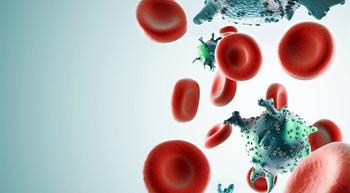
Educated Patient® Prostate Cancer Summit Novel Imaging Strategies Presentation: May 21, 2022
Watch Dr. Jeremie Calais, from UCLA, discuss novel imaging strategies, during the CURE Educated Patient Prostate Cancer Summit.
Episodes in this series

Advanced imaging techniques are allowing clinicians to pinpoint exactly where prostate cancer has spread in the body, therefore lending the opportunity for more exact staging and targeted treatment approaches.
Specifically, prostate-specific membrane antigen (PSMA) PET/CT scans are “revolutionizing” the prostate cancer landscape, according to Dr. Jeremie Calais, associate professor in the Department of Molecular and Medical Pharmacology, director of UCLA’s Theranostics Program and Clinical Research Program, said in an interview with CURE®.
Calais also discussed PSMA PET/CT imagining at the CURE® Educated Patient® Prostate Cancer Summit.
“(PSMA) PET/CT scan has literally changed the landscape of how we manage prostate cancer, because it allows earlier identification of the disease sites and better staging,” Calais said. “It’s a breakthrough technology, and it will benefit a lot of patients by showing disease earlier and better.”
PSMA is a protein that is over-expressed on prostate cancer cells, and PSMA PET/CT imaging involves a tracer that binds to PSMA and makes it appear on the scans. The approach is more sensitive than other techniques, such as CT scans alone, allowing for clinicians to treat cancer sites earlier than before.
“You see it earlier when it’s smaller than before, so you’re able to act on these disease sites at an earlier stage,” Calais said. “So for example, you can do radiation therapy on one single site that would have remained hidden for long if you didn’t have the scan. It would have ultimately progressed.”
There are multiple PSMA PET agents that are currently approved by the Food and Drug Administration: Gallium Ga 68 PSMA-11, which was approved in December 2020; Pylarify (piflufolastat F 18), approved in May 2021; and Illuccix (kit for the preparation of gallium Ga 68 gozetotide). Regardless of which agent is chosen, patients can expect the process to go similarly to a normal PET/CT scan.
Patients with prostate cancer can expect to first be injected with a radiotracer. Then, they must wait about an hour as the agent moves throughout the body. Finally, they undergo the scan, which typically takes about 20 to 25 minutes, according to Calais.
“It’s usually about an hour and a half to two hours maximum in the nuclear medicine clinic,” Calais said.
Despite the obvious advantages of seeing prostate cancer more exactly, PSMA PET/CT imagining has only been around for a few years, so most prostate cancer treatment protocols have been crafted with the use of older imaging techniques.
“With all this new information from this improved sensitivity of the scan, we are relearning how to stage the disease… so we need to re-learn how to use this new information,” Calais said. “Some treatment algorithms may be good with the prior techniques … but with this new information, maybe we need to change how we treat the disease.”
Calais mentioned that the PSMA may not only be good for seeing disease, but potentially treating it as well in patients whose disease became resistant to other therapies.
“Here you can use the PSMA protein target as a binding site to deliver not the tracer that you would use for imaging, but rather radiopharmaceutical therapy agents,” Calais said.
Ultimately, PSMA PET/CT imaging will become key in treating patients with prostate cancer.
“It pinpoints site of disease so easily and in great contrast that it will soon be indispensable for any treatment management decision,” he said.
For more news on cancer updates, research and education, don’t forget to














